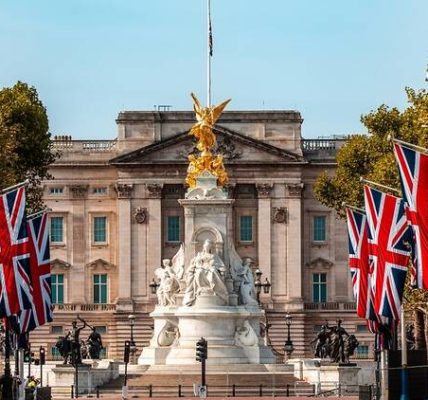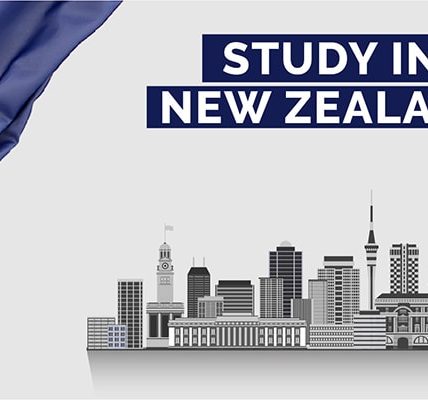USA Scholarship Visa Requirements – The United States continues to be one of the most popular destinations for international students seeking higher education. The country is home to some of the world’s best universities, offering a wide variety of programs in almost every field imaginable.
However, studying in the U.S. comes with its own set of challenges, the most important being the visa requirements. For students who receive scholarships, navigating the visa process becomes an even more crucial part of their educational journey.
In this comprehensive guide, we’ll explore the scholarship visa requirements for international students wishing to study in the U.S., including the types of visas available, the application process, and the key requirements for securing a scholarship and visa.
Types of Student Visas for the USA
Before diving into the scholarship visa requirements, it’s essential to understand the different types of student visas available for international students wishing to study in the U.S. There are three primary visa categories that foreign students typically apply for: USA Scholarship Visa Requirements.
1. F-1 Visa (Academic Student Visa)
The F-1 visa is the most common visa for international students attending a U.S. university or college. This visa is required for students who plan to pursue a full-time academic program, such as a bachelor’s degree, master’s degree, or doctorate. The F-1 visa is also applicable for students attending English language programs in the U.S.
- Eligibility: To be eligible for an F-1 visa, you must have been accepted into a Student and Exchange Visitor Program (SEVP)-approved institution. This program requires you to be enrolled as a full-time student for the duration of your academic program.
- Scholarships and Financial Support: F-1 visa holders can accept scholarships that cover tuition, fees, and living expenses. Scholarships are often a critical part of the financial support required to meet the visa requirements. The U.S. government requires proof of sufficient financial resources to cover the cost of education, and a scholarship can help fulfill that requirement.
2. J-1 Visa (Exchange Visitor Visa)
The J-1 visa is issued for students, researchers, and professors who are part of an exchange visitor program. This visa is more common for those studying under special programs, internships, or fellowships. J-1 visa holders can participate in educational or cultural exchange programs that aim to promote mutual understanding between the U.S. and other countries.
- Eligibility: The J-1 visa requires you to be sponsored by an approved exchange program. In most cases, the exchange program provides financial support through scholarships or grants.
- Scholarships and Financial Support: If you receive a scholarship under a J-1 visa, it is often tied to specific programs sponsored by the U.S. government or affiliated organizations. The scholarship can help cover tuition, living expenses, and other fees associated with studying in the U.S.
3. M-1 Visa (Vocational Student Visa)
The M-1 visa is for students enrolled in vocational or non-academic programs. While this is not as common as the F-1 or J-1 visa, it is an option for students who are attending technical schools, training programs, or career-related courses that are not part of a traditional academic curriculum.
- Eligibility: M-1 visa applicants must show they have been accepted into a full-time program at a recognized vocational institution. The program must provide a specialized skill set that is not available in their home country.
- Scholarships and Financial Support: M-1 visa holders can receive scholarships from educational institutions that offer vocational training, but it is often more difficult to find scholarships for M-1 students as compared to F-1 and J-1 visa holders.
USA Scholarship Requirements for Visa Applicants
For international students wishing to obtain a U.S. student visa with the help of a scholarship, there are several essential visa and scholarship requirements that must be met. Let’s break down the key requirements:
1. Eligibility for Scholarships in the U.S.
Before applying for a visa, students must secure a scholarship offer from a U.S. institution or a private organization. Scholarships typically come in two forms: merit-based (awarded for academic excellence or talent) and need-based (awarded based on financial need). Scholarships can cover full tuition, partial tuition, or living expenses.
- Application Process for Scholarships: To be considered for scholarships, students must apply directly to the scholarship provider. This may be a U.S. university or a private organization, and each scholarship has its own criteria and application procedures.
- Required Documentation: When applying for scholarships, students typically need to submit several documents, including:
- Transcripts of previous academic records
- Letters of recommendation from teachers or professors
- A personal statement or essay explaining why they deserve the scholarship
- Proof of extracurricular involvement or leadership
- Test scores (e.g., SAT, GRE, TOEFL, or IELTS, depending on the program)
- Scholarship Types: International students are eligible for a variety of scholarships in the U.S., including:
- University-specific scholarships: Many U.S. universities offer scholarships directly to international students.
- Government-funded scholarships: These include programs such as the Fulbright Scholarship, which provides funding for international graduate students and professionals.
- Private scholarships: Various organizations and corporations offer scholarships to international students, including the Bill & Melinda Gates Foundation and the Coca-Cola Scholars Program.
2. Financial Proof for the Visa Application
One of the most important visa requirements for students applying to study in the U.S. is the ability to prove sufficient financial resources. U.S. immigration laws require students to demonstrate they can cover the cost of tuition, fees, living expenses, and other costs during their stay.
- Scholarships and Financial Aid: If a student has received a scholarship, this can be used as proof of financial support for the visa application. The scholarship offer letter typically outlines the amount of financial support the student will receive, including any coverage for tuition, living expenses, and travel costs.
- Bank Statements and Other Financial Documents: If a scholarship does not cover all costs, students may need to provide additional proof of financial resources, such as:
- Bank statements or affidavits of support from parents or sponsors.
- A letter of financial guarantee from a sponsor.
- Documentation showing the student has access to sufficient funds for their stay in the U.S.
3. The SEVIS Fee and I-20 Form
Once a student is admitted to a U.S. university and has received a scholarship, they will be issued an I-20 Form (for F-1 students) or a DS-2019 Form (for J-1 students). These forms are essential for the visa application process and are required to pay the SEVIS (Student and Exchange Visitor Information System) fee.
- I-20 Form (F-1 Visa): The I-20 form certifies that a student has been accepted into a U.S. university or college and provides information about the student’s program, scholarship (if applicable), and estimated expenses. The student must present this form when applying for the visa and at the U.S. port of entry.
- DS-2019 Form (J-1 Visa): This form is issued to students applying for J-1 visas and indicates that they are participating in an exchange program. The DS-2019 form is used to show proof of acceptance into an exchange program that sponsors the scholarship.
- SEVIS Fee: Before applying for the visa, students must pay the SEVIS fee, which supports the maintenance of the U.S. government’s database of international students. The fee is typically paid online after receiving the I-20 or DS-2019 form.
4. Visa Application Process for Scholarship Recipients
Once you have been accepted into a U.S. university, received your scholarship, and gathered the required documentation, the next step is applying for your student visa. Here’s an overview of the process:
- Complete the DS-160 Form: All visa applicants must complete the DS-160 form, which is the online application for a U.S. visa. This form requires basic personal information, details about your intended U.S. study program, and the scholarship you have received.
- Pay the Visa Application Fee: Most visa applicants will need to pay a non-refundable visa application fee. This fee can vary depending on the type of visa (F-1, J-1, or M-1).
- Schedule an Interview: Students must schedule a visa interview at the nearest U.S. Embassy or Consulate. During the interview, applicants will be asked about their educational background, scholarship, and plans in the U.S.
- Prepare for the Interview: When attending the interview, it is important to bring the following documents:
- A valid passport
- A printed DS-160 confirmation page
- A passport-size photograph (if not uploaded online)
- The I-20 or DS-2019 form
- Scholarship award letter
- Financial proof (bank statements, sponsor letters, etc.)
- SEVIS fee payment receipt
- Attend the Interview: The interview will typically involve questions about your study plans, financial situation, and ties to your home country. Be prepared to answer questions honestly and clearly.
- Visa Approval and Travel: If the visa is approved, the U.S. embassy or consulate will place a visa stamp in your passport. You can then travel to the U.S. to begin your studies. Be sure to arrive at least a few weeks before your program start date, as there may be additional procedures to complete upon arrival.
Conclusion
The process of securing a scholarship and applying for a U.S. student visa can be a daunting but rewarding journey. International students who receive scholarships play an important role in the academic and cultural diversity of U.S. universities, and there are several pathways for them to achieve their dream of studying in the U.S. USA Scholarship Visa Requirements. USA Scholarship Visa Requirements.
By understanding the different types of visas, scholarship requirements, and the visa application process, you can increase your chances of successfully navigating the system.
From securing a scholarship to meeting visa requirements, it’s important to start the process early, stay organized, and ensure that all documents are in order. With careful planning, you can achieve your academic and career goals in the United States. USA Scholarship Visa Requirements.



